ZHCSC40E February 2014 – May 2018 TPS92630-Q1
PRODUCTION DATA.
- 1 特性
- 2 应用
- 3 说明
- 4 修订历史记录
- 5 说明 (续)
- 6 Pin Configuration and Functions
- 7 Specifications
- 8 Parameter Measurement Information
- 9 Detailed Description
- 10Applications and Implementation
- 11Power Supply Recommendations
- 12Layout
- 13器件和文档支持
- 14机械、封装和可订购信息
7.7 Typical Characteristics
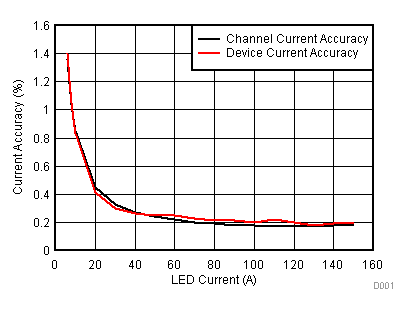
| TA = 25ºC | V(VIN) = 14 V | Three LEDs |
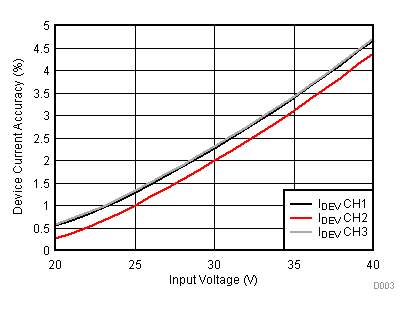
| V(VIN) = 20 V | I(setting) = 150 mA |
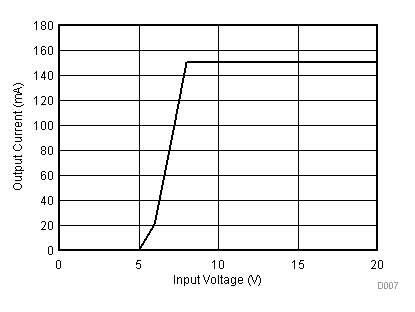
| 3 white LEDs | LEDs in series | I(setting) = 150 mA |
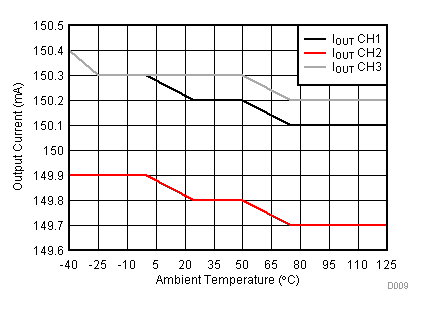
| I(setting)= 150 mA | V(VIN) = 14 V |
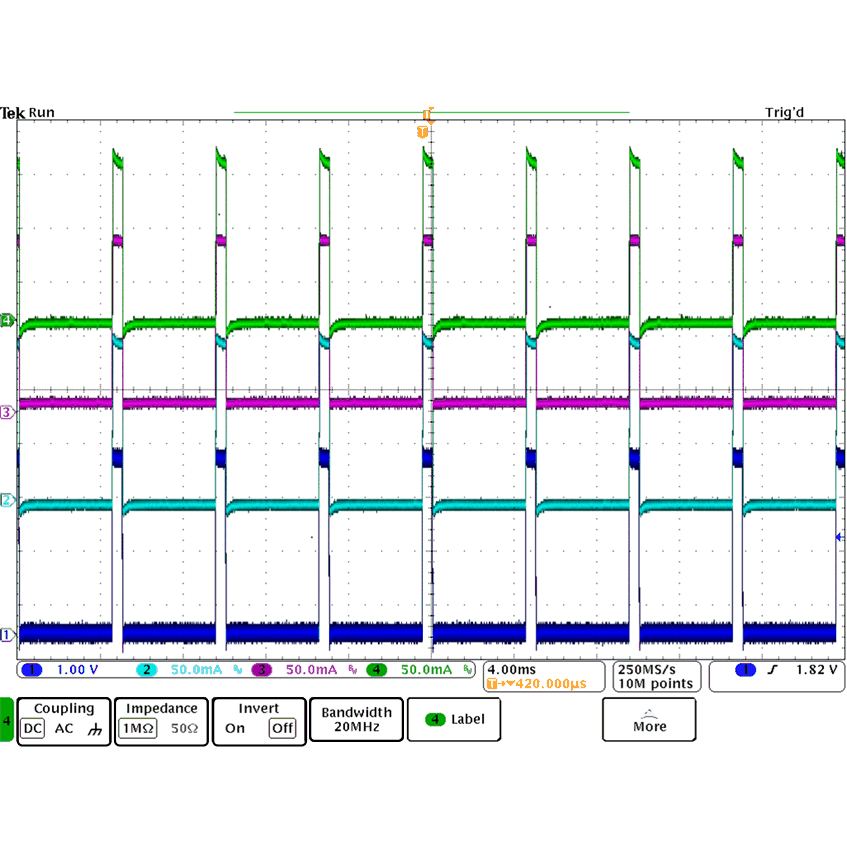
| Ch. 1 = PWM input | Ch. 2 = IOUT1 | Ch. 3 = IOUT2 |
| Ch. 4 = IOUT3 | f(PWM) = 200 Hz | Duty cycle = 10% |
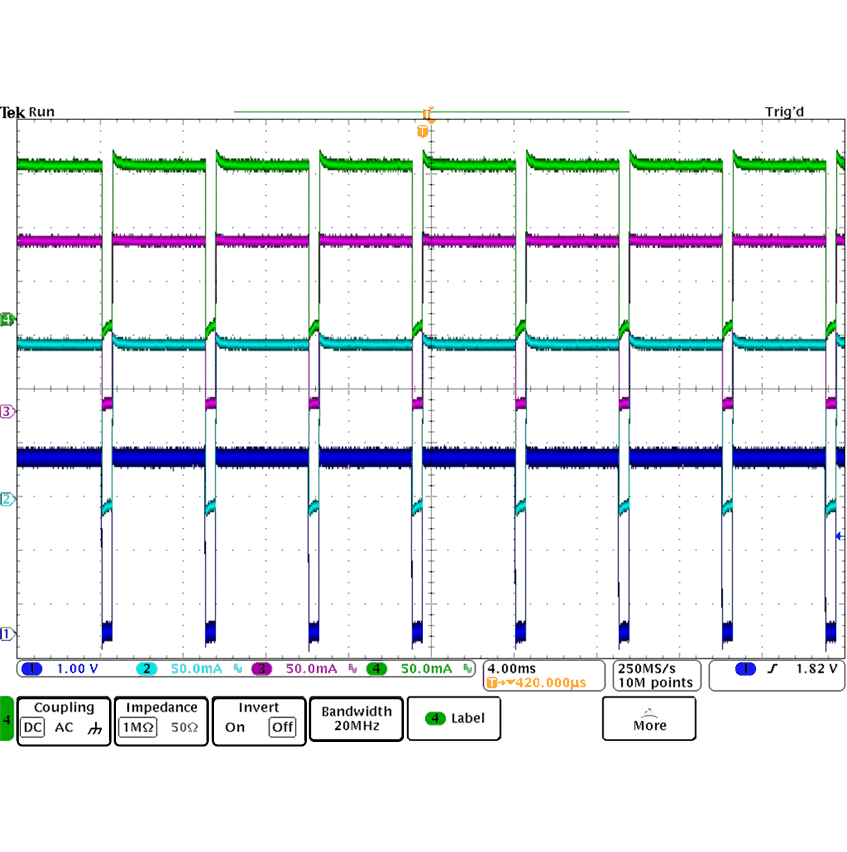
| Ch. 1 = PWM input | Ch. 2 = IOUT1 | Ch. 3 = IOUT2 |
| Ch. 4 = IOUT3 | f(PWM) = 200 Hz | Duty cycle = 90% |
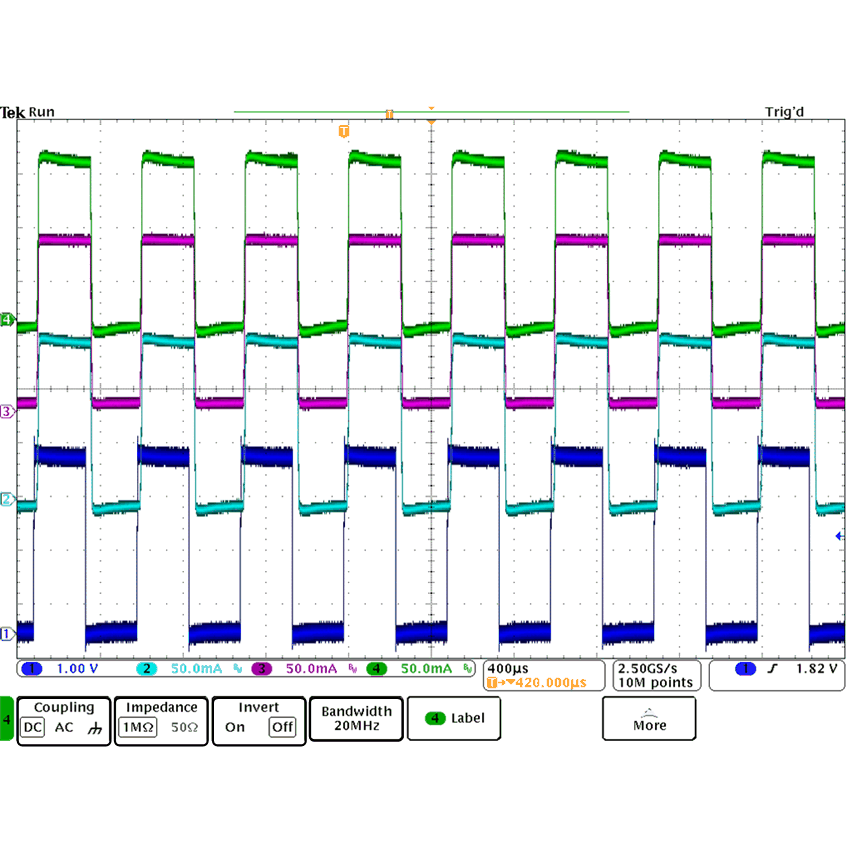
| Ch. 1 = PWM input | Ch. 2 = IOUT1 | Ch. 3 = IOUT2 |
| Ch. 4 = IOUT3 | f(PWM) = 2000 Hz | Duty cycle = 50% |
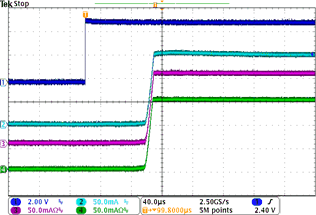
| I(setting) = 60 mA | ||
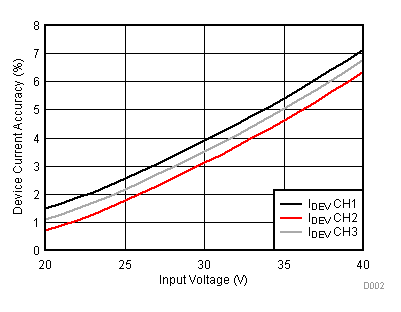
| V(VIN) = 20 V | I(setting) = 30 mA |
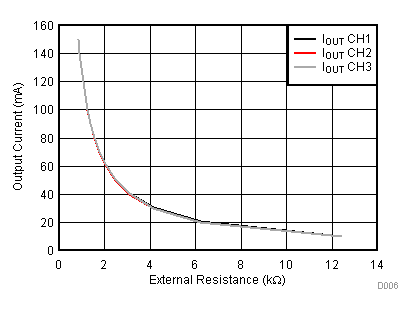
| A |
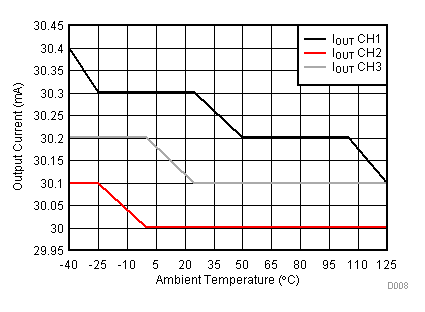
| I(setting) = 30 mA | V(VIN) = 14 V |
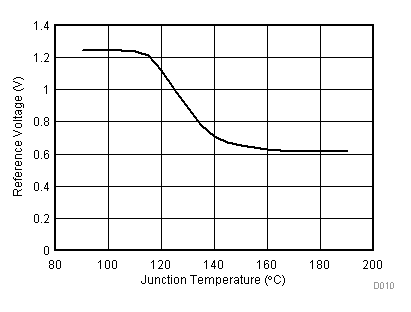
| A |
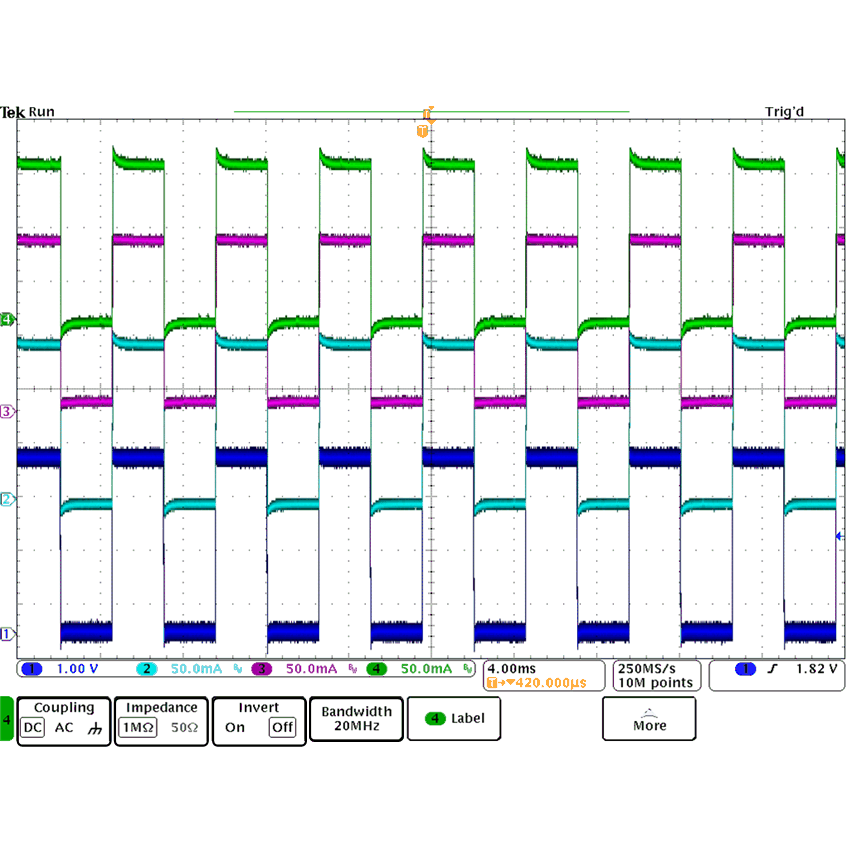
| Ch. 1 = PWM input | Ch. 2 = IOUT1 | Ch. 3 = IOUT2 |
| Ch. 4 = IOUT3 | f(PWM) = 200 Hz | Duty cycle = 50% |
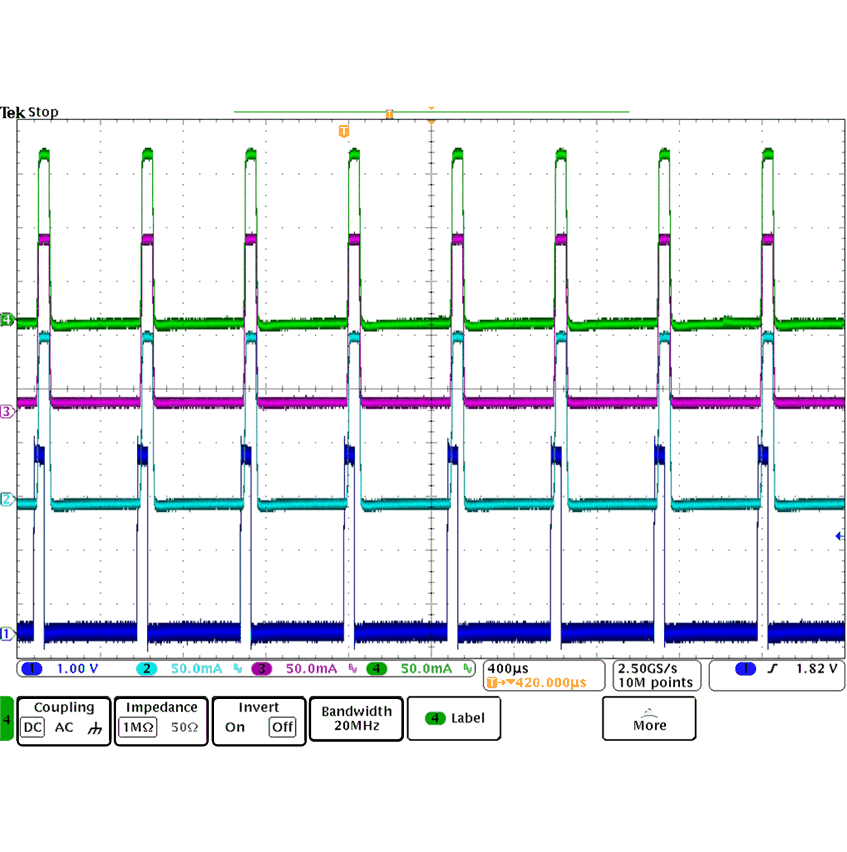
| Ch. 1 = PWM input | Ch. 2 = IOUT1 | Ch. 3 = IOUT2 |
| Ch. 4 = IOUT3 | f(PWM) = 2000 Hz | Duty cycle = 10% |
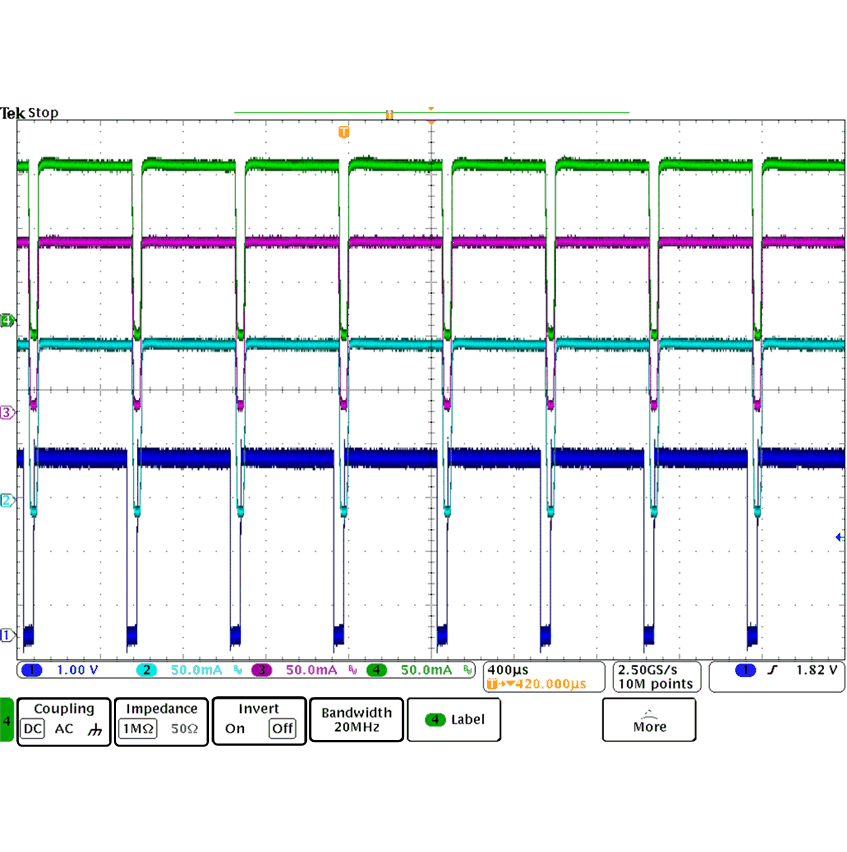
| Ch. 1 = PWM input | Ch. 2 = IOUT1 | Ch. 3 = IOUT2 |
| Ch. 4 = IOUT3 | f(PWM) = 2000 Hz | Duty cycle = 90% |
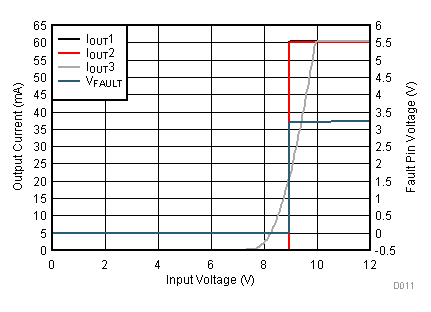
| V(VIN) = V(EN) | V(VIN) = 0 V to 12 V | I(setting) = 60 mA |
| 3 white LEDs | dV/dt = 0.5 V/min |